Weeknight (3 Hour) Brew Session: Magic Hat #9 Clone Attempt
With the wife and kids out of town for a few days back on the 13th, I decided to take a shot at making one of my favorite beers: Magic Hat #9. The recipe is based upon this comment in HBT, but using Danstar Nottingham dry yeast. I probably should have opted for the Wyeast WLP002 liquid yeast, however I’ve been interested in creating a stock of dry yeasts at home, and I wanted to see what the result of a dry English yeast would be. Also, as mentioned in the linked comment, I plan on using 4 cans of DelMonte canned apricot halves, pureed. We’ll see how it turns out.
One of the goals of this brew session was to try to see how short I could make a brew session, and see if I could make weeknight brew sessions more of a reality. To help speed up the process, I took my collected strike water at tap temperature, dumped it into my mash tun, and then pumped it through my CFC as I ran hot tap water (~145°F) through from my utility sink. The result was taking 5 gallons of 67°F to 142°F in about 5 minutes.
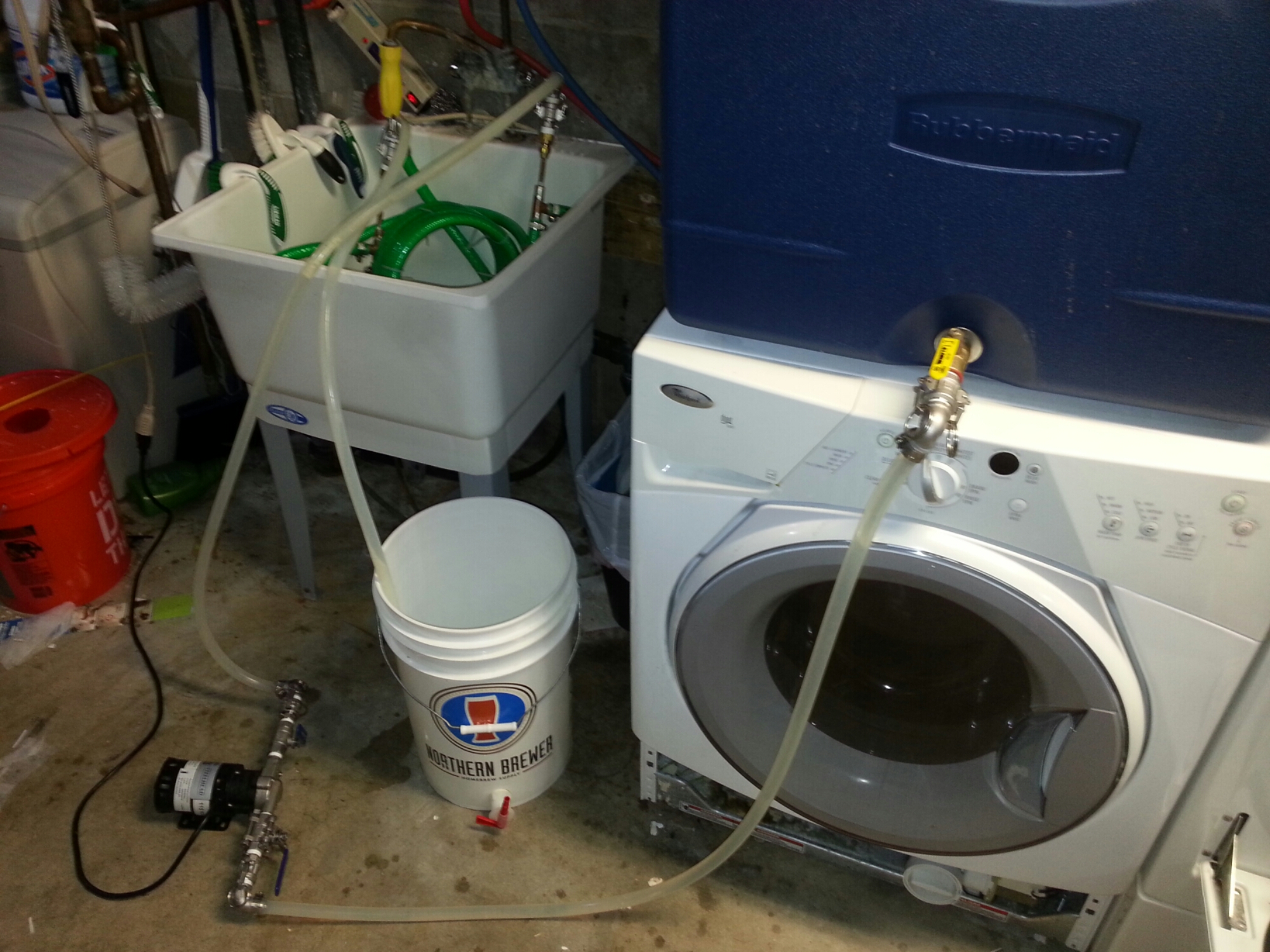
Once I got it in my keggle and started up the heat, I was able to get it to strike temperature in under 10 minutes. If I had a hot water tap in my garage, near my boil kettle, I probably could preheat my water as I start the burner, and get my water to strike temp within 10 minutes of when I start.
Here’s a timeline of what my brew session would have looked like had I not been messing around with taking pictures, futzing around with thermometers and timers, and taking notes on it all:
0:00 Start collecting 5 gallons filtered water.
0:05 Finish collection. Start CFC pre-heat.
0:10 Finish pre-heat. Start kettle burner.
0:20 Reach strike temp (162-170°F)**. Mash-in.
0:25 Start of saccharification rest (152°F).
1:00 Start heating sparge water (~5 gal.)
1:15 Start of lautering
1:25 Start of mash-out, sparge (170°F)
1:35 Start kettle burner
1:45 Start of boil. Skim off hot break.
1:50 First hops addition (0.25 oz. – Columbus)
2:40 Second hops addition (1 oz. Cascade)
2:47 Third hops addition (1 oz. Cascade)
2:50 Flame out. Start CFC to carboy.
3:00 Carboy full (6 Gal)
So, 3 hours. Not bad. And if I had a proper brew stand with separate boil and HLT kettles, and with hot water nearby, I could probably shave off another 10-15 minutes. Now, my actual brew session started at 6:15PM, and ended at 10:45PM, so 4.5 hours. However during this time I managed to transfer two brews to keg, wash and sanitize two carboys, and transfer a beer from primary to secondary. So I don’t think it’s a stretch to say that a sub-3 hour brew session is possible when you have the right equipment and processes.
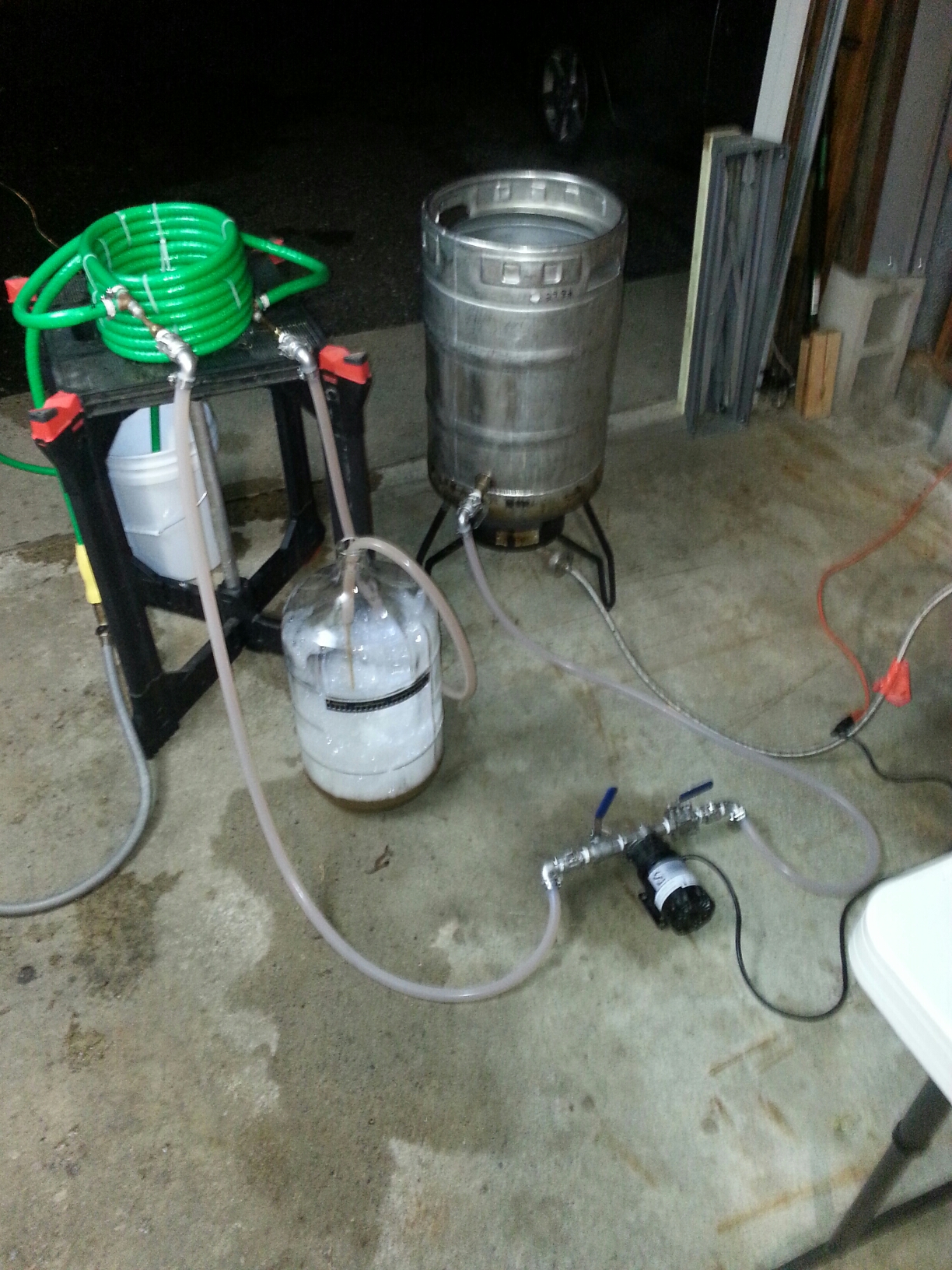
And now for something completely random… While I still had about 3 gallons of 190° wort in the kettle as I was running it through the CFC, I managed to fumble and drop my CDN ProAccurate Quick-Read Thermometer into the kettle. Needless to say I wasn’t interested in turning my hands into lobster claws, so I grabbed my stainless steel spoon and tried to fish it out. I managed to get it out after it had sat in near-boiling wort for about 2 minutes. The screen was black from the heat, and I thought for sure I had killed it. I quickly rinsed it off and popped the battery out. Once it was dried off, I popped the battery in and… IT STILL WORKED! Now, your mileage may vary, but for $20, this is a very good quick-read thermometer. I highly recommend it!
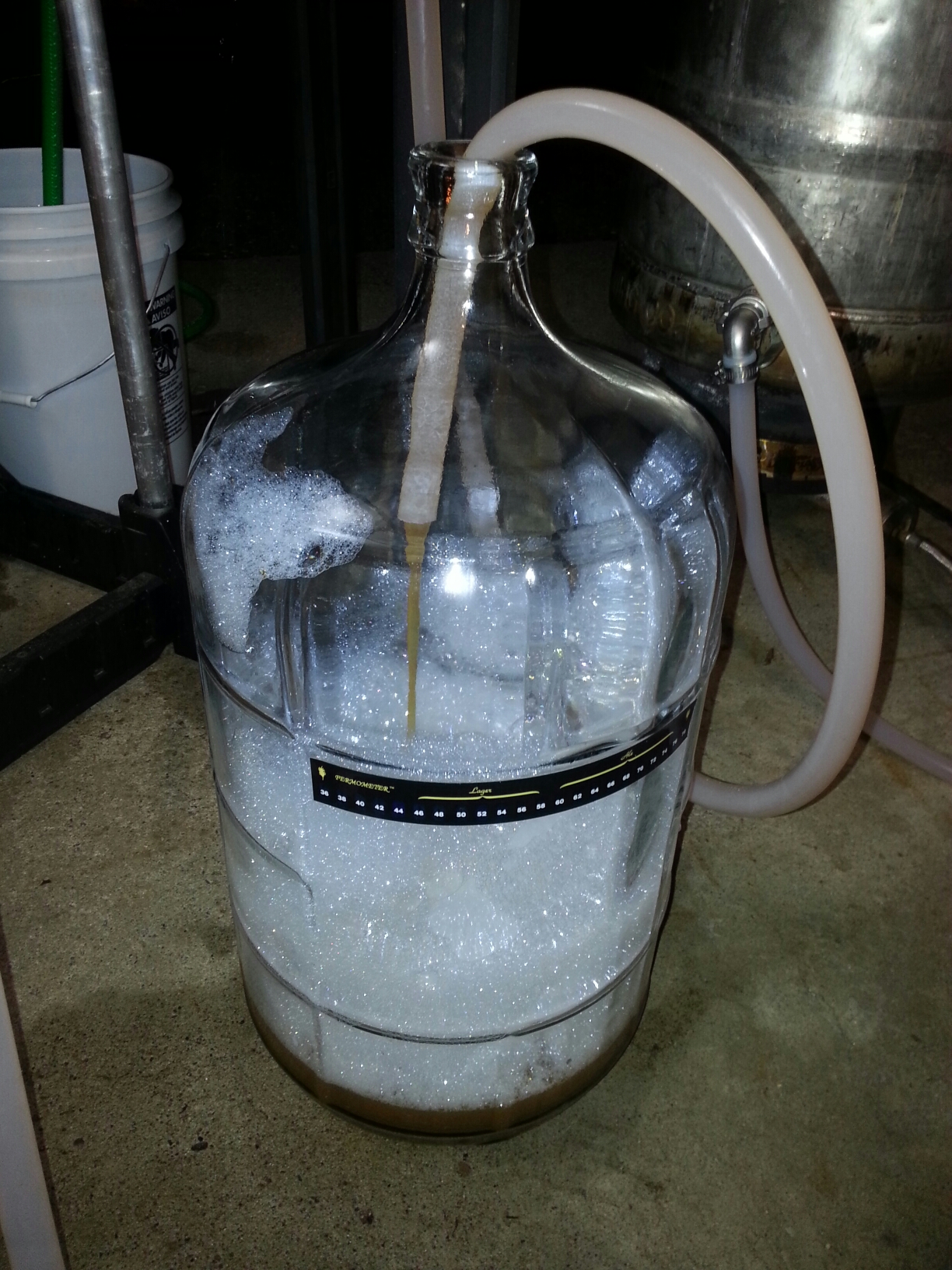
Recipe and Stats (again, credit: HBT)
7/13/2015 Magic Hat #9 Clone Attempt (6 Gal)
10 lbs. – American 2-Row Pale Malt
1 lb. – Crystal Malt (60L)
3 lbs. – Oregon Fruit Puree – Apricot
Mash at 152° for 60 min.
Hop Schedule
.25 oz. – Columbus (60 min.)
1 oz. – Cascade (10 min.)
1 oz. – Cascade (3 min.)
Yeast
Danstar Nottingham (Dry)
O.G. 1.048
Racked to secondary on 8/7, 5.8bx (1.008 corrected)
Racked onto Vinter’s Harvest Apricot Puree
Much-belated update:
Tasing notes: Sour, sour, sour.  I think that the apricot puree ended up being way more acidic than I expected, and after it fermented out the second time, the yeast left no sweetness behind to help curb the dryness and acidity of the beer. If I were to do this again, I might consider using the apricot puree after the beer had been cold crashed, then then left cold to let the apricot solids settle out. I also might try using a yeast with a lower attenuation to leave more sweetness behind. Danstar Nottingham is considered to be a high attenuation yeast, so it probably consumed all the sugars that the apricot puree brought to the party. Maybe next time stick with WLP002 or Safeale S-04.
I think that the apricot puree ended up being way more acidic than I expected, and after it fermented out the second time, the yeast left no sweetness behind to help curb the dryness and acidity of the beer. If I were to do this again, I might consider using the apricot puree after the beer had been cold crashed, then then left cold to let the apricot solids settle out. I also might try using a yeast with a lower attenuation to leave more sweetness behind. Danstar Nottingham is considered to be a high attenuation yeast, so it probably consumed all the sugars that the apricot puree brought to the party. Maybe next time stick with WLP002 or Safeale S-04.
Or perhaps it might just be time to try an apricot extract instead. :-/
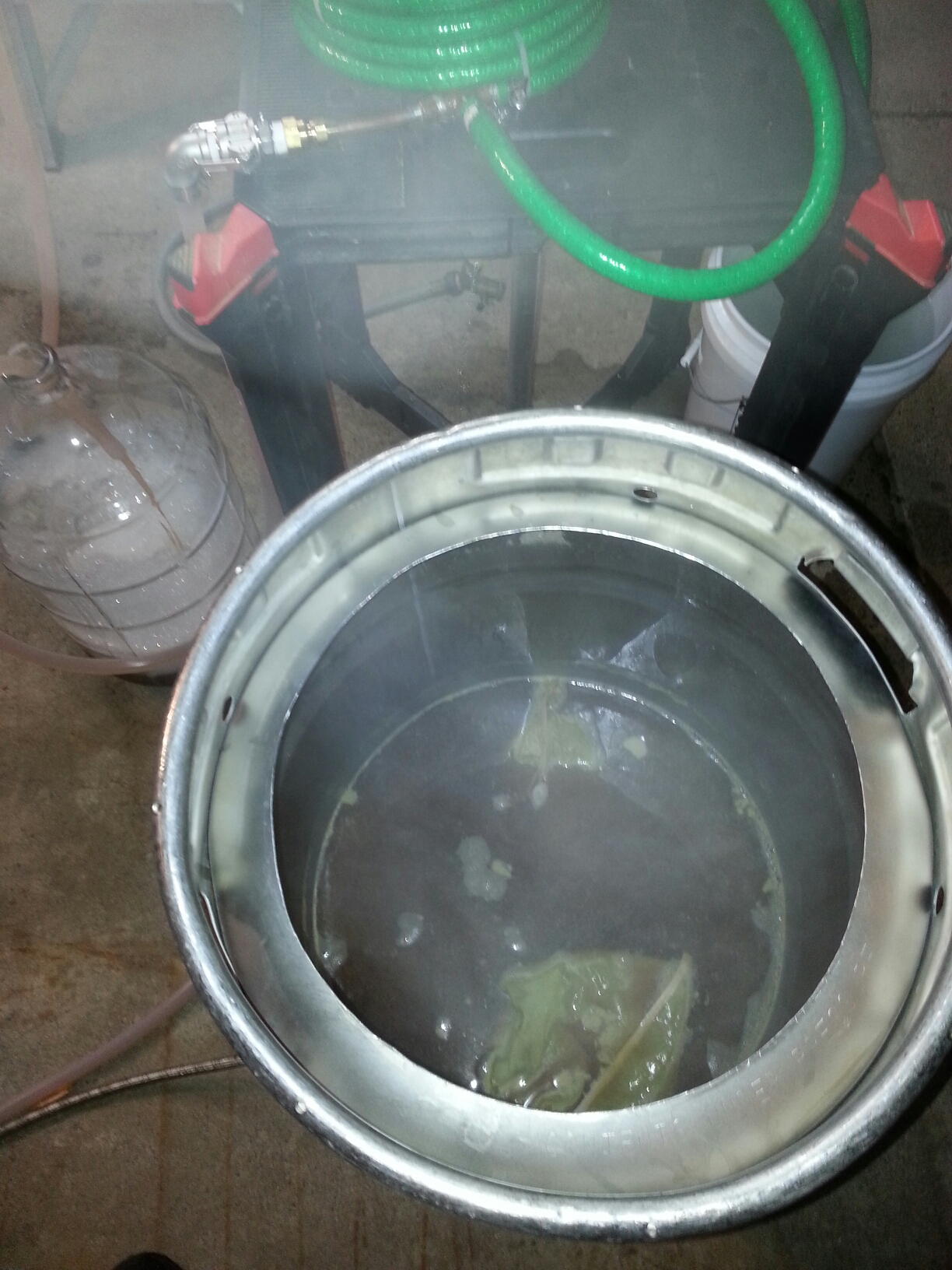
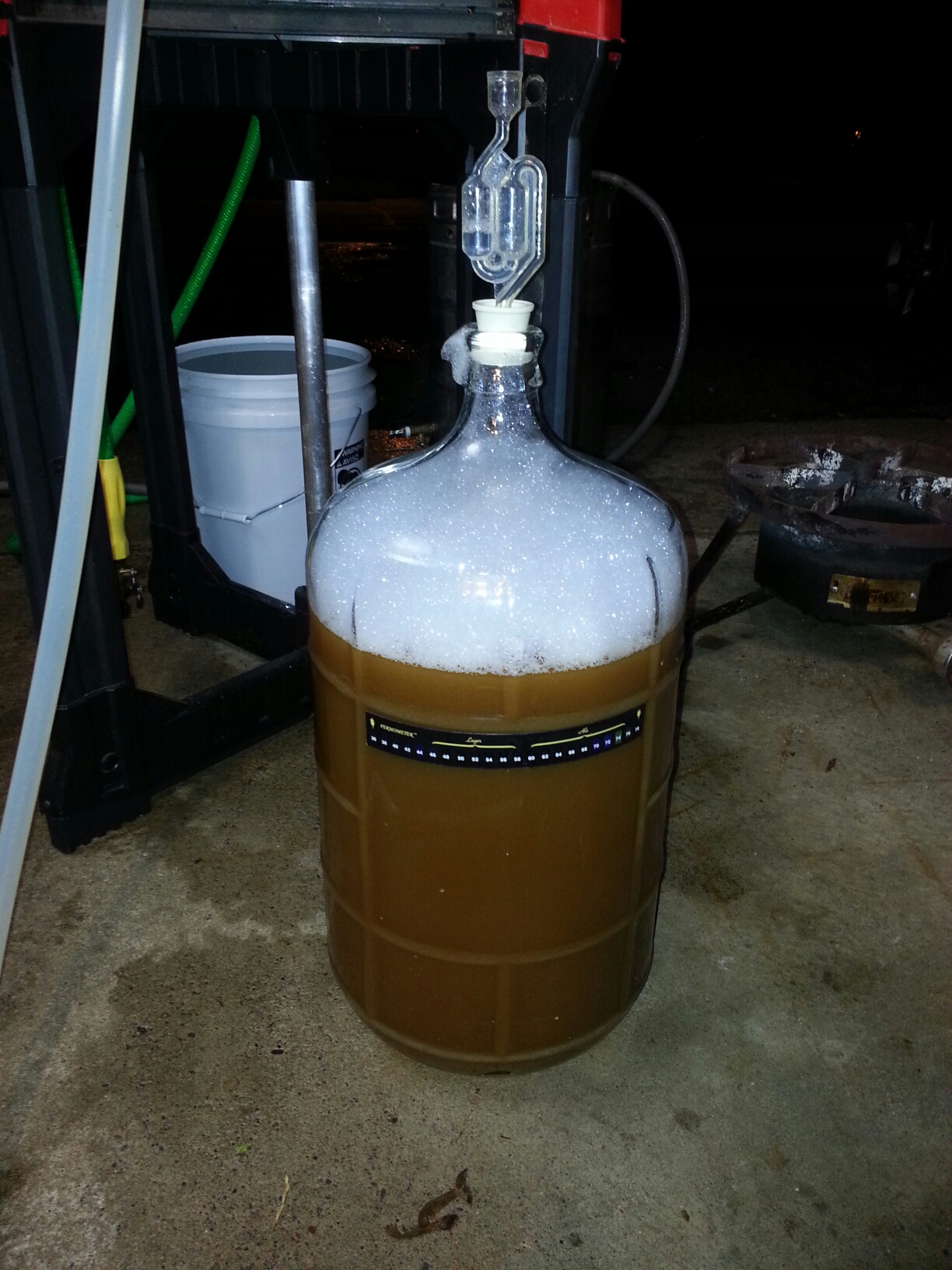
Leave a Reply